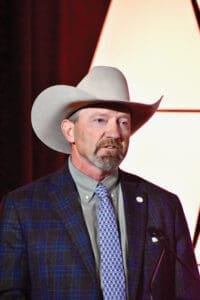By Burt Rutherford, Contributing Editor

“All’s fair in love and war,” the old saying goes. But what about the cattle market?
The answer to that question has been the subject of great debate in cattle circles, with one side saying that the market works just fine and, if left alone, will sort itself out as it reacts to fundamental economic signals. The other camp believes the market can only function to the benefit of beef producers if the government is involved.
The latter appears to be the philosophy behind a series of USDA attempts to interpret the Packers and Stockyards Act of 1921 through agency rulemaking. The latest proposed Packers and Stockyards rule, “Fair and Competitive Livestock and Poultry Markets,” which surfaced June 25, has many in the cattle business concerned.
According to USDA, the proposed rule will better protect farmers, ranchers and other covered market participants by making it clearer how prohibitions on unfair practices will be enforced under the Packers and Stockyards Act. Specifically, the rule provides clearer tests and frameworks around unfair practices that harm market participants individually and unfair practices that harm markets overall.
“This is the third or fourth, depending on how you count, in a series of rulemakings that the Biden administration has put out under the Packers and Stockyards Act of 1921, and this is the rule that we view as the scariest of that entire regulatory series,” according to Tanner Beymer, National Cattlemen’s Beef Association (NCBA) senior director of government affairs.
“USDA’s newly proposed rule is a direct attack on cattle producer profitability.”
– NCBA Vice President of Government Affairs Ethan Lane
Key in USDA’s approach is the agency’s focus on alleged harm to individual producers. “This rule would roll back the Harm to Competition standard,” Beymer said. The standard is a common feature of well-known antitrust statutes like the Sherman Act, the Clayton Act, the Robinson-Patman Act and others.
“Essentially what it does is provide a framework and a level playing field by which USDA adjudicators and federal judges can use to look at individual allegations of violations of antitrust law,” Beymer said. “The Harm to Competition standard is important because it says, if we’re going to claim that a packer has violated the Packers and Stockyards Act, we have to prove that the action in question is harmful to overall competition in the marketplace and not just an individual slight. That’s important when you start thinking about grid marketing, value-based marketing and the fact that not all cattle are the same,” he said.
By nullifying the Harm to Competition standard, the proposed rule would open regulated entities to legal risk. That would result in fewer marketing opportunities for cattle producers and open the door for the ag secretary to set a minimum cash trade in the cattle markets, according to the Kansas Livestock Association (KLA).
In short, the rule could take the cattle market back to selling cattle on averages rather than differentiating animals based on economic value.
The current proposed rule was published in the Federal Register June 26, starting a 60-day comment period that concludes Aug. 26. “It will take USDA a few months at the fastest to respond to all those comments, process them and then issue a final rule that will have the full force and effect of law,” Beymer said.
Even if USDA personnel work at breakneck speed, it’s likely there will be an election before the final rule is released. “There’s a very high likelihood that, if the White House changes hands, the incoming administration could roll back this rule and protect cattle producers from this assault on their profitability mechanisms,” Beymer said.
If things remain the same, NCBA will work with the House and Senate through the appropriations process to defund the rule, he added.
USDA attempted to roll back the standard in 2010 and 2016, but neither attempt was successful, according to KLA. Additionally, the requirement to demonstrate harm to competition has been affirmed by eight federal courts of appeals with no dissenting circuit court opinions, and the U.S. Supreme Court has denied review of the issue, the association said.
According to Beymer, “The administration is going to tell you that they’re promoting fairness in the marketplace, which is something that all of us, including NCBA, can be supportive of. But their definition of fairness really is more [government regulation]. They want to see an equality of outcome across the entire industry, not equality of opportunity to access some of the programs that differentiate cattle in the marketplace.”
Then There’s Chevron
Within a few days of USDA issuing its proposed rule, the U.S. Supreme Court issued a decision striking down the Chevron doctrine. Established in 1984, the doctrine directed courts to defer to federal agency interpretations of congressionally passed laws.
“Our elected officials in Congress should be making our laws, not unelected bureaucrats at federal agencies,” said NCBA President Mark Eisele. That’s now the case. The change clears a legal path to challenge regulations and rolls back the broad authority that federal agencies have had to enforce the regulations they created without clear congressional intent, proponents claim.
That will likely affect USDA’s latest rule on marketplace fairness. “We cannot forecast what will happen, but at the very least, USDA will need to significantly strengthen its justification for the rule to show congressional intent,” said Hunter Ihrman, NCBA director of policy communications. “The decision opens USDA to more risk should the rule be litigated.”
Much can happen before the latest USDA fairness rule might become effective. But the fight is underway.
“USDA’s newly proposed rule is a direct attack on cattle producer profitability. By creating criteria that effectively deem any innovation or differentiation in the marketplace improper, USDA is sending a clear message that cattle producers should not derive any benefit from the free market, but instead be paid one low price regardless of quality, all in the name of so-called fairness,” said NCBA Vice President of Government Affairs Ethan Lane.






